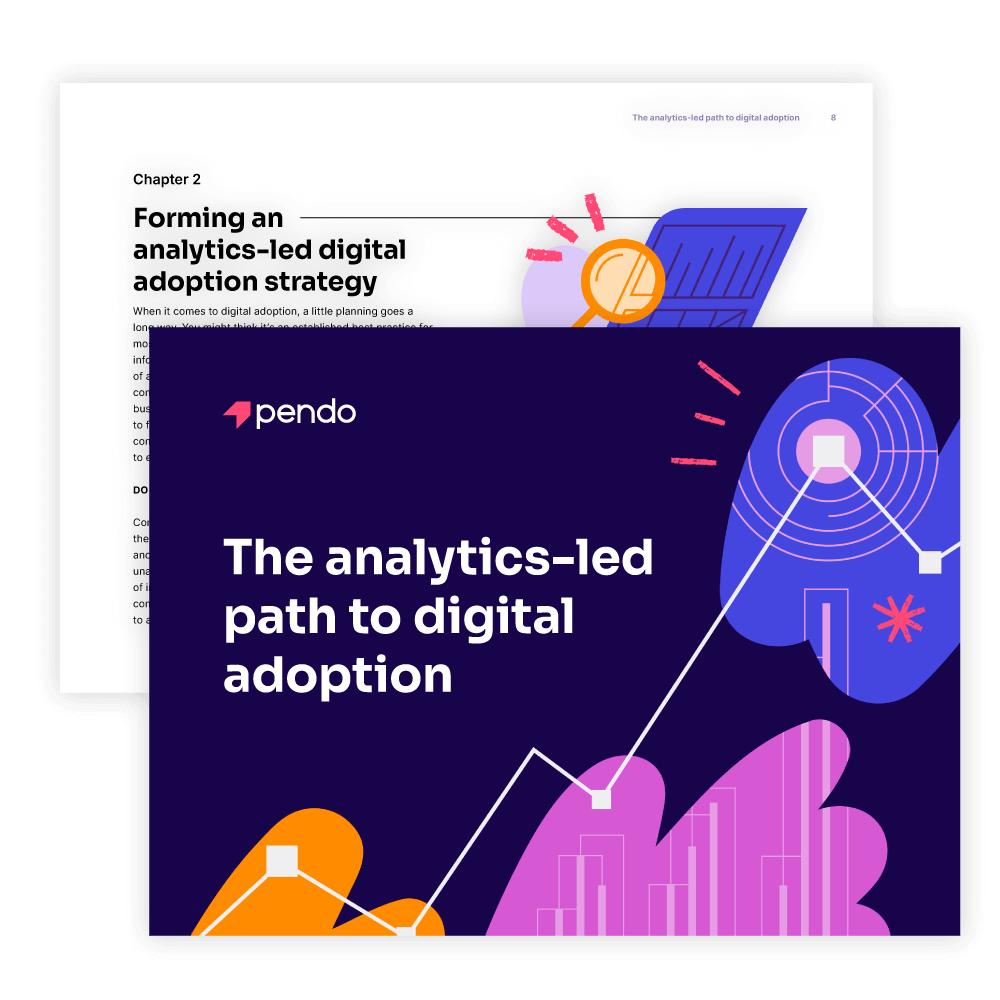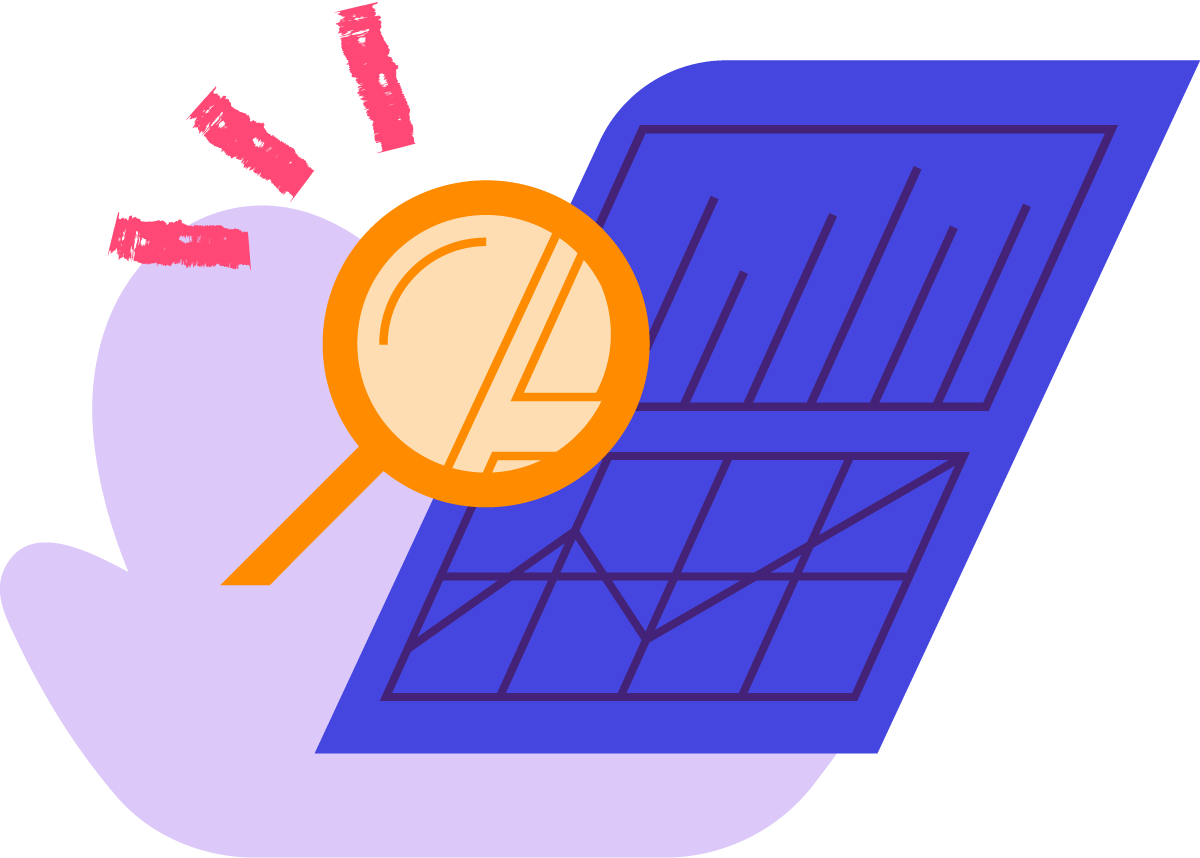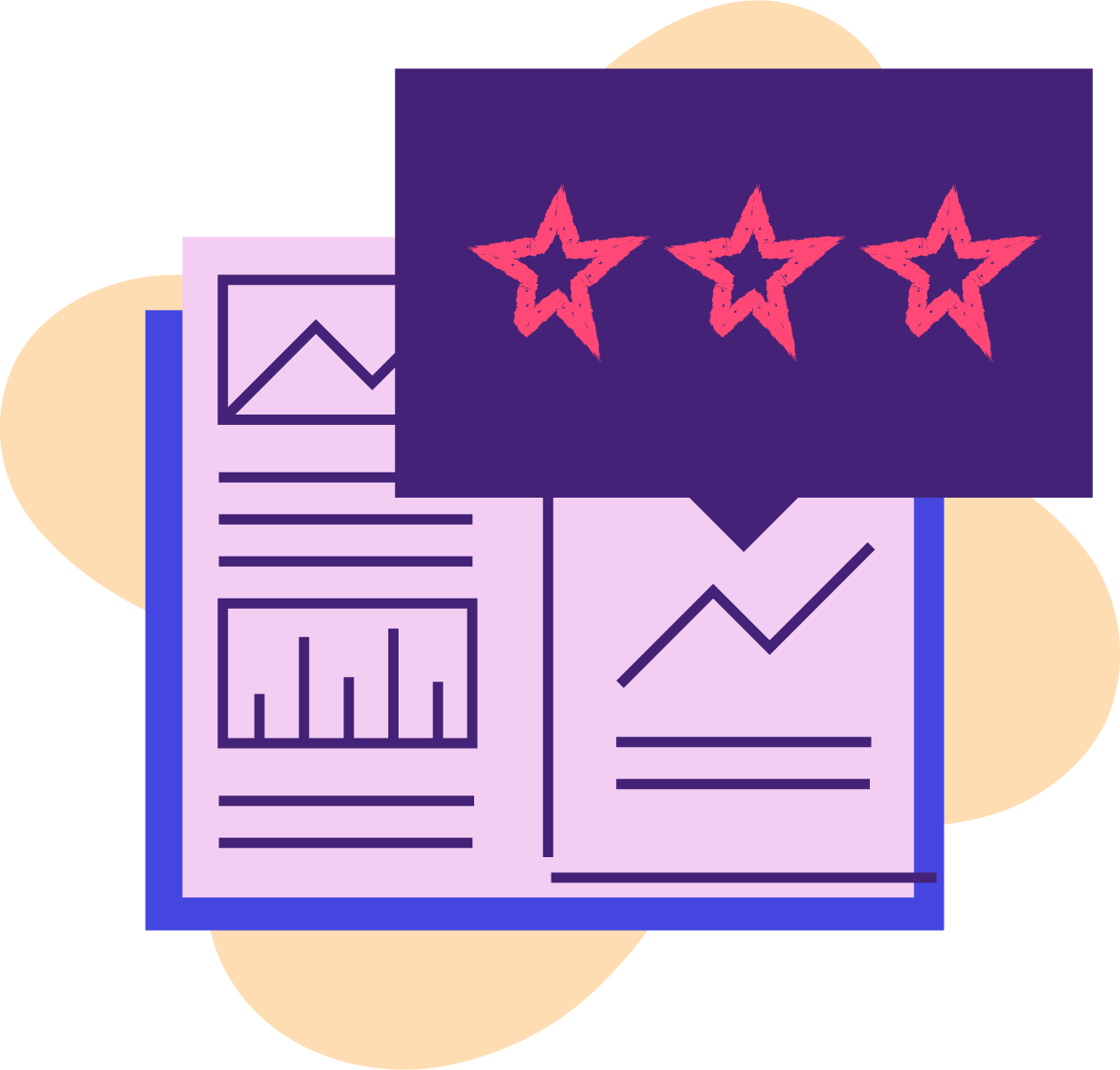
Introduction: The digital transformation journey
“A journey of a thousand miles begins with a single step.” So holds an ancient Chinese proverb. It’s one that companies planning digital transformations would do well to remember.
Crafting the right digital transformation strategy and rolling out new digital tools for your employees is no easy task, especially for large enterprises. It won’t happen magically overnight, and the unfortunate reality is that most companies fail at undertaking it in the long term. They fail because they’re not putting the employee experience at the center of their strategy. But therein lies an opportunity.
Companies that understand the behavior and needs of their employees and base their plans for digital change around those behaviors and needs are the ones that will succeed. To understand why—and the crucial role that analytics plays in driving digital change—let’s take a step back and consider how the workplace and our very conception of it have transformed in recent years.
The rise of the digital workplace
There’s been a paradigm shift in how we think about software at work. Where we once considered software just one kind of tool among many we used in the workplace, it’s become so much more. Indeed, software has become the workplace itself. So many of what were once direct human-to-human interactions now take place digitally. Software has become the means through which we communicate, collaborate, plan new initiatives, execute implementations, and accomplish countless other tasks.
Company budgets reflect this new reality. Organizations are spending more on the apps they use internally than ever before. By 2020, in fact, the average company was spending 50 percent more on software as a service (SaaS) products than it did two years earlier. You might assume that realizing the benefits of these apps would be easy once they’re pushed live within a company. But are IT teams really getting the full value of what they’re paying for?
Speed bumps along the way
If employee experience is anything to go by, the answer to the previous question is no. In recent survey data, IBM discovered that a “trust gap” existed between employers and employees over the issue of software. Specifically, it found that “while 74% of employers believe their organizations are helping employees learn skills needed to work in a new way, only 38% of employees felt similarly.” Managers may be giving their teams new digital tools to use, but they’re not providing the support employees need to fully adopt and feel comfortable with those tools. The result? Individuals are getting stuck, and companies aren’t driving the change they think they are.
Analytics as the answer
If a digital transformation plan is going to succeed, business technology leaders and their partners have to base it on a clear understanding of how employees actually do their work. To do that, they need to harness the power of analytics. It’s no surprise a recent Everest Group report argues that analytics should form “the backbone of key business decisions.” In this e-book, we’ll show you how analytics—in particular the robust analytics the best digital adoption solutions offer—provide meaningful organizational insights, inform and improve your digital transformation roadmap, optimize execution, and make already successful rollouts even better.
Are you ready to take the first step on your digital transformation journey? It starts with understanding the nature of analytics and the problems it solves.

1. Analytics 101
As mentioned above, many of the interactions, processes, and workflows that used to occur in person now take place digitally. While this new reality comes with many challenges, a major upside is that you can measure and quantify all these activities in a way never before thought possible. As a result, organizational leaders now rely on analytics to understand who is doing what, when.
Simply put, analytics is the process by which a person or program uses statistical methods and technologies for analyzing data. The purpose of analytics is to discover patterns within the data that lead to new insights—and these insights can guide a business’ strategy. Not all analytics tools, however, are created equal. In order to get a full understanding of how employees are doing their work, basic insights are not enough.
Many business apps offer rudimentary dashboards that display some fundamental usage metrics. These metrics usually measure a given point in time, with little context or room for exploration of the story behind the numbers. Merely using an app, after all, doesn’t indicate whether someone’s using it in a valuable way. These basic metrics also exist in isolation, unconnected to other apps and thus not offering a holistic picture of employee activity. This is where the right digital adoption solution comes in.
Meaningful action comes from meaningful insights
A digital adoption solution (sometimes referred to as a digital adoption platform) is a software that is layered on top of another software product or app. On the front end, it helps facilitate proficiency by guiding employees through key tasks and providing contextual information as they navigate the product. But on the back end, the best digital adoption solutions provide analytics rich in organizational insights that help business technology owners and the teams they work with understand the full flow of work both within and across apps.
With a solution such as Pendo for Employees, managers don’t just see partial data around isolated tasks within individual programs. They can see how work happens across apps and across time. What’s more, managers can separate out analytics data into segments, allowing them to see how the story of the workplace looks different for different people.
Want to compare how, say, two regional sales teams are using Salesforce? How employees who started three months ago are utilizing a given feature compared to employees who started three years ago? Segmenting insights based on metadata (an employee’s role, tenure, location, etc.) and/or specific behaviors (for example, whether it’s someone’s first time using an app) allows for all this, and more.
Using analytics to glean insights about different groups, at different times, at different levels of granularity helps guide both the strategy and tactics of a digital adoption plan (more on that later).
Who benefits from robust analytics?
Driving successful digital adoption is a team effort, and everyone who’s part of that team stands to gain from the meaningful organizational insights good analytics provides:
IT department: IT is usually considered responsible for implementing and driving the adoption of new software and digital tools, as well as managing the company tech budget. Analytics helps them on both counts. Understanding how employees work today helps IT better plan changes for tomorrow. And seeing which apps employees are using for which activities gives much needed perspective. It helps IT as they assess their software investments and determine whether they’re really getting their money’s worth (more on this below).
Ultimately, IT should take a holistic view of how a digital transformation is going, harnessing analytics to get high level insights about overall adoption rates, productivity gains, and efficiency improvements.
Cross-functional partners: Outside IT, other departments such as sales, customer success, and information security will often have their own operations and enablement teams responsible for training users on new apps and features. These teams will have interests that may be more tactical than strategic. They’ll want to use analytics to drill down to a more granular level—to understand specific employee pain points, where within a workflow people get stuck, or how well they’re complying with specific processes and best practices. This will help inform what problems to prioritize and what in-app guidance to create.
Employees as a whole: Companies don’t prioritize digital adoption for its own sake, but rather in the service of clear business goals and outcomes. But realizing these outcomes depends on employee behavior. In a sense, great analytics is a vehicle for the voice of the employee—it helps management cut through the noise to get to real insights into how people do their work. This helps give important context on how to plan change. Remember, a strategy based on existing employee culture, habits, and behaviors is the only one with a chance of succeeding.
Hopefully at this point, you have a good sense of analytics and the value of the insights that it provides, particularly from the best digital adoption solutions. Now let’s look at how to apply those insights to craft the right digital adoption strategy for you and your team.

2. Forming an analytics-led digital adoption strategy
When it comes to digital adoption, a little planning goes a long way. You might think it’s an established best practice for most companies to plan a digital adoption strategy or initiative informed by analytics, one with nuance and consideration of all the relevant perspectives. But you’d be wrong. With companies using more apps than ever before, it’s easy for business technology owners and their organizational partners to fall into a reactive rather than proactive approach when it comes to software. And this approach inevitably leads to employee confusion, frustration, and wasted money.
Double (app) trouble
Consider the problem of duplicative apps—apps that serve the same purpose, often with similar functionality to one another. Duplicative apps become a problem when IT is unable to actively manage and control the proliferation of internal-facing apps a company uses. The average company now has 3.6 such apps in its stack, which leads to a cascade of issues.
Financially speaking, the existence of duplicative apps means a company is paying more than it should for software. But it also hurts the company’s bottom line in other, more indirect ways. Different teams using different apps for the same purpose hinders collaboration and dynamism. Employee confusion over which app to use for which purpose creates a drain on IT’s time and resources in the form of increased support tickets and help queries. And employee frustration at navigating the confusing app landscape hurts their experience, decreasing productivity and increasing the risk of employee churn.
The right way to strategize
Duplicative apps are just one example of the problems that arise when companies put an emphasis on apps for apps’ sake. To thrive in today’s world, they need to shift their mindset from getting more software to getting the most out of the software they need—and using analytics to do it. Planning the right strategy thus starts with getting your own house in order.
IT managers usually approach digital adoption with the goal of solving key business problems and realizing key outcomes. To cite the above example, there may be a proliferation of apps and spending they need to get under control. They may seek to increase productivity, collaboration, or usage of valuable and expensive features on given apps. They may want to improve employee compliance in a given workflow or function. Whatever the need, whatever the goal, meeting it means using analytics to understand how to get there and know when you’ve been successful.
Understand the current state of work
Forming the right digital adoption strategy means basing it off how employees actually behave. That means leveraging analytics from a digital adoption solution to understand the ways behavior contributes to the issue you’re trying to fix.
If you want, for example, to increase uptake of a pricey app feature that employees may struggle to adopt, use analytics to explore the ways employees are currently accomplishing the work the app in question is meant to aid. This will help you better plan the transition and interventions with employees, and give you context on which segments you need to prioritize guidance for.
To take another example: If you want to rein in your tech budget and are worried your company is paying for too many apps, use analytics to see ways in which employees are using different apps for the same purpose, and plan the retirement of one or more of them accordingly.
You should also survey your tech stack and consider whether the reasons why a given app was purchased for the company are still relevant. If the apps are still solving real problems and meeting real needs, think about whether other apps you currently pay for can do the same. IT teams are often hesitant to retire apps for fear of conflicting with outspoken business partners, but with the right plan for transition and the data to back up the decision, they can make a compelling case to management for doing away with these apps.
Move from insights to action
Once you’ve identified the problem you want to solve—the metric you want to grow or shrink, the behavior you want to change, the cost you want to reduce—you can use analytics to better define your strategic goal, the future state you want your employees to get to. The organizational insights a strong digital adoption solution provides can help you set goals around solving the problem at hand and measure progress along the way. They can also help you plan the tactical means of executing your strategy—a topic we’ll cover in the next section.

3. Letting analytics guide your digital adoption tactics
With your digital adoption strategy set, it’s time to plan the tactics that will drive results. Luckily, the same digital adoption solution that provided the analytics that helped shape your plan also comes with a robust set of tools for driving change.
Customized guidance for the employees who need it most
As mentioned above, strong digital adoption solutions such as Pendo let you segment analytics by various metadata and behavioral categories. Once you do that, you’ll be able to create customized guidance and target the segments that need it most.
Messaging within the app itself allows you to add context and increase awareness about new workflows or features. Business technology owners and their partners can also factor in the existing behaviors analytics has shown employees engaging in to help build the right kind of in-app guides for whatever purpose they need. Whether it’s training users on adopting new software or features, driving compliance in key areas, or highlighting improved workflows, giving guidance within the app is the best way to get employees the knowledge they need about how to best do their work.
The voice of the employee as the voice for change
A digital adoption solution also lets managers make employees an active part of the change process through both quantitative and qualitative metrics. Once new guidance goes live, companies can look at usage behavior, as well as use in-app polls, surveys, and other feedback mechanisms to check in with employees and see how the change process is going. Once they capture the voice of the employee, they can better understand how to improve guidance and procedures. In doing so, they help make change a two-way process, informed not just by top-down planning but by bottom-up feedback. Employee knowledge is a precious asset, one that can only make a digital transformation plan better and more effective.
Iterate, iterate, iterate
Once a change and the guidance around it has gone live, managers can also leverage their digital adoption solution’s analytics to fix what isn’t working and sustain and reinforce what is. If the data, for example, shows a key segment is struggling with the uptake of a new feature, managers can dig into behavioral data and feedback to understand where and why employees are getting stuck. Once they understand the problem, they’ll be able to address it with improved guidance tailored to meet employee needs.
Analytics is also a great means not only to understand what’s going wrong, but to see what’s going right in unexpected ways. Employees are usually closer to the work that managers plan change around than the managers themselves. This means employees often come up with their own ways of completing a process or workflow, and these ways may be better and more efficient than what managers have come up with. Harnessing that knowledge can improve change throughout the entire organization.
What’s more, analytics can make clear who your “super users” are. These are your early adopters, the subset of employees who accomplish a task or process exceptionally well. Digging into the data, you’ll be able to understand what behaviors set them apart from the pack and leverage those insights to create more of them via improved guidance.
Same method, new goals
With the right digital adoption solution, you have everything you need to guide your employees to the end goal, whatever it may be. Once a change has taken hold and employees are behaving in the desired way, you can start the whole process over again. Identify a new problem or business goal, use analytics to understand the specific behavior that contributes to it, and seize on that knowledge to build out your strategy and tactics. Once the change has gone live, keep an active eye on what’s working and what isn’t to optimize the process.
You are what you measure
You may be familiar with the story of the person who loses their car keys one night and looks for them under the one streetlight nearby. A policeman joins the search and asks the person if they’re sure this was the spot where the keys were lost. “No,” the person answers, “but it’s the only place lit up enough to look for them.”
The story holds a lesson for business technology leaders and other digital adoption advocates in the workplace: Meaningful insights are limited to what you measure.
With analytics at your disposal, it’s possible to understand the objective reality of what’s happening in the workplace. That knowledge is empowering. But it can also be scary, especially if it casts a light on unpleasant truths about how employees are performing. The advocates who succeed in driving digital transformation usually are those with the courage to accept this reality, understand it, and plan change around it.
Driving digital adoption is no easy task. But the first step in getting to a better tomorrow is truly understanding your workplace today. The insights analytics provides are within reach. Are you ready to harness them to drive the change your organization needs?